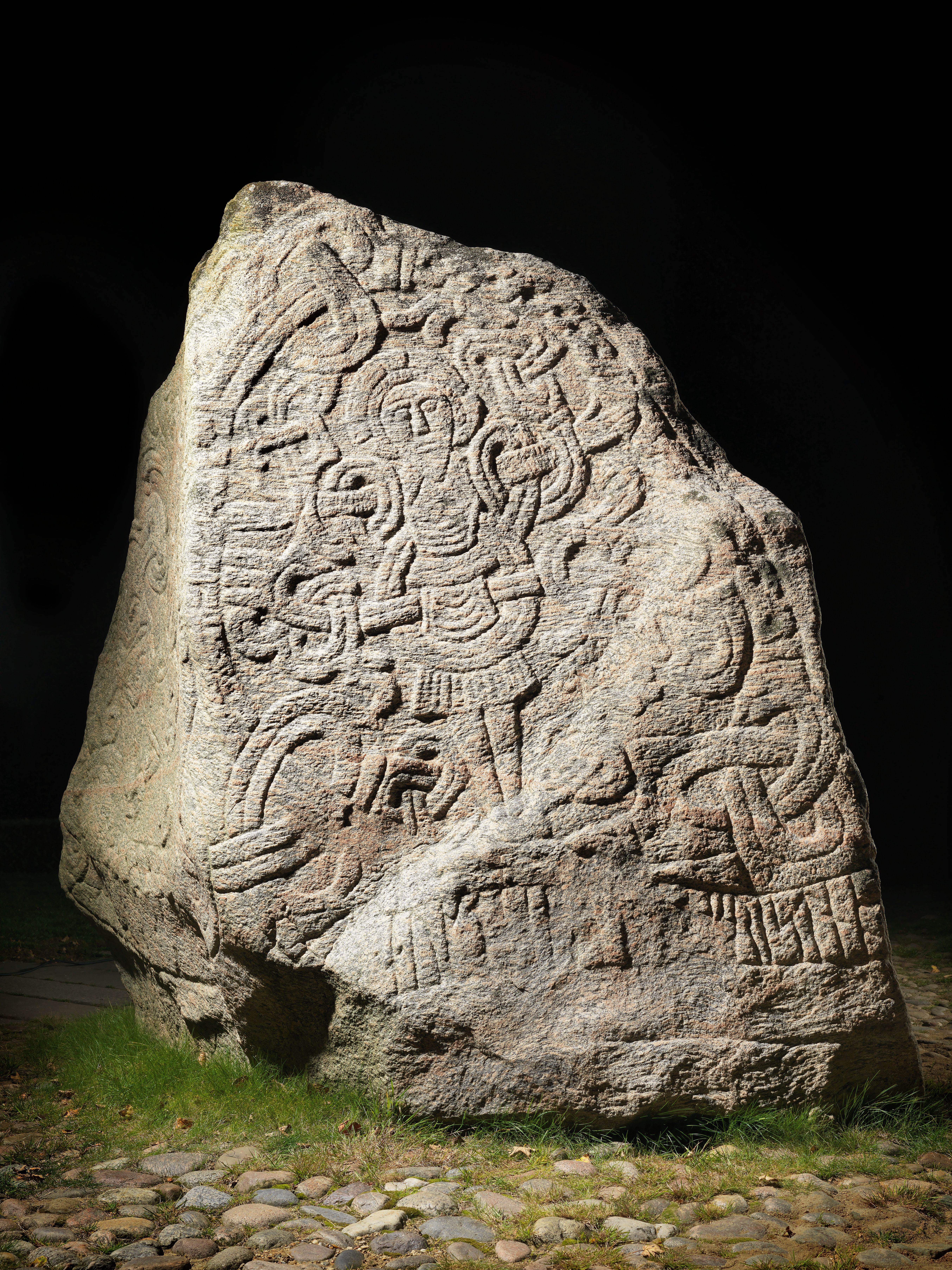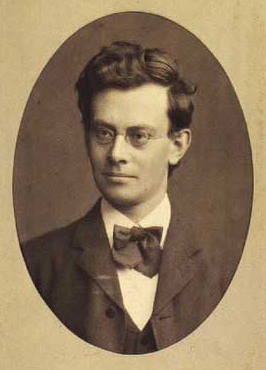|
Sweyn II Of Denmark
Sweyn II ( – 28 April 1076), also known as Sweyn Estridsson (, ) and Sweyn Ulfsson, was King of Denmark from 1047 until his death in 1076. He was the son of Ulf Thorgilsson and Estrid Svendsdatter, and the grandson of Sweyn Forkbeard through his mother's line. He was married at least two times, and fathered 20 children or more out of wedlock, including the five future kings Harald Hen, Saint Canute, Oluf Hunger, Eric Evergood, and Niels. He was courageous in battle, but did not have much success as a military commander. His skeleton reveals that he was a tall, powerfully built man who walked with a limp. Biography Accession to the throne Sweyn was born in England, Bricka, Carl Frederik, ''Dansk Biografisk Lexikon'', vol. XVII vend Tveskjæg – Tøxen 1903pp.3–5 as the son of Ulf Thorgilsson and Estrid Svendsdatter, the latter of whom was the daughter of King Sweyn I Forkbeard and sister of Kings Harald II and Canute the Great. Sweyn grew up a military leader, and ... [...More Info...] [...Related Items...] OR: [Wikipedia] [Google] [Baidu] |
King Of Denmark
The monarchy of Denmark is a constitutional political system, institution and a historic office of the Kingdom of Denmark. The Kingdom includes Denmark proper and the autonomous administrative division, autonomous territories of the Faroe Islands and Greenland. The Kingdom of Denmark was already consolidated in the 8th century, whose rulers are consistently referred to in Franks, Frankish sources (and in some late Frisians, Frisian sources) as "kings" (). Under the rule of King Gudfred in 804 the Kingdom may have included all the major Lands of Denmark, provinces of medieval Denmark. The current unified Kingdom of Denmark was founded or re-united by the Vikings, Viking kings Gorm the Old and Harald Bluetooth in the 10th century. Originally an elective monarchy, it became hereditary monarchy, hereditary only in the 17th century during the reign of Frederick III of Denmark, Frederick III. A decisive transition to a constitutional monarchy occurred in 1849 with the writing of th ... [...More Info...] [...Related Items...] OR: [Wikipedia] [Google] [Baidu] |
Ulf Thorgilsson
Ulf Thorgilsson, commonly known as Ulf Jarl or Earl Ulf, was a Danish jarl of Skåne and regent of Denmark. Ulf was the son of Thorgil Sprakling and the father of King Sweyn II of Denmark and thus the progenitor of the House of Estridsen, which would rule Denmark from 1047 to 1375, which was also sometimes, specially in Swedish sources, referred to as the Ulfinger dynasty to honor him. Biography Ulf Jarl was the son of Danish chieftain Thorgils Sprakalägg. In the 18th century, Danish historian Jacob Langebek proposed that Styrbjörn Starke and Tyra Haraldsdotter were the parents of Thorkel Sprakalegg.Searle, W. G. (1899 Anglo-Saxon Bishops, Kings, and Nobles: The Succession of the Bishops and the Pedigrees of the Kings and Nobles(London: Cambridge University Press. p. 355). Therefore, this would make Ulf Jarl a descendant of Olof (II) Björnsson of the House of Munsö and through Tyra a descendant of Harald Bluetooth Harald "Bluetooth" Gormsson (; , died c. 985/86) was ... [...More Info...] [...Related Items...] OR: [Wikipedia] [Google] [Baidu] |
Bricka, Carl Frederik
Carl Frederik Bricka (10 July 1845 – 23 August 1903) was a Danish archivist, historian and biographer. Biography Carl Bricka was born in Copenhagen, Denmark. His father, Frederik Vilhelm Theodor Bricka (1809–79), was a medical doctor. He attended Metropolitanskolen and earned his Magister degree from the University of Copenhagen (1870). He became an assistant at the Danish Royal Library in 1871. During the period 1883–97, he was employed in the Danish National Archives, after which he became the department head (''Rigsarkivar''). Bricka became a member of the board of the Danish Historical Society and edited the historical magazine published by the association (1878–97). He also served as editor of ''Danske Magazin'' (1883–1901). From 1885 until his death in 1903, he was the publisher of the ''Dansk biografisk lexikon: tillige omfattende Norge for Tidsrummet 1537–1814''. The first edition of this Danish biographic encyclopedia was published by Gyldendal ... [...More Info...] [...Related Items...] OR: [Wikipedia] [Google] [Baidu] |
Niels Of Denmark
Niels ( – 25 June 1134) was the King of Denmark from 1104 to 1134. Niels succeeded his brother Eric Evergood and is presumed to have been the youngest son of King Sweyn II Estridson. King Niels actively supported the canonization of Canute IV the Holy and supported his son Magnus after he killed his rival for the succession, Knud Lavard. His secular rule was supported by the clergy. Niels was killed in an ensuing civil war and succeeded by Eric II Emune. Early life Niels was born around 1063, married in 1105, and died in 1134.Stefan PajungNiels 1065–1134, Aarhus University, 22 January 2010 His parents were King Sweyn II Estridson and an unknown concubine. Four of Niels' brothers ascended the throne before him. He is first mentioned in history in 1086 when he was sent to Flanders to take the place of his exiled brother, King Olaf I. Bricka, Carl Frederik, ''Dansk Biografisk Lexikon'', vol. XII ünch – Peirup 1898, pp. 199–201Available online/ref> When his brother ... [...More Info...] [...Related Items...] OR: [Wikipedia] [Google] [Baidu] |
Oluf Hunger
{{hndis, Oluf of Denmark ...
Olaf of Denmark – Danish: ''Oluf'' - may refer to: * Olaf I of Denmark * Olaf II of Denmark Olaf II of Denmark (December 1370 – 3 August 1387) was King of Denmark as Olaf II (though occasionally referred to as Olaf III) from 1376 and King of Norway as Olav IV from 1380 until his death. Olaf was the son of Queen Margaret I of Denmark ... [...More Info...] [...Related Items...] OR: [Wikipedia] [Google] [Baidu] |
Saint Canute
Canute IV ( – 10 July 1086), later known as Canute the Holy () or Saint Canute (''Sankt Knud''), was King of Denmark from 1080 until 1086. Canute was an ambitious king who sought to strengthen the Danish monarchy, devotedly supported the Roman Catholic Church, and had designs on the English throne. Slain by rebels in 1086, he was the first Danish king to be canonized. He was recognized by the Roman Catholic Church as patron saint of Denmark in 1101. Life Canute was born , one of the many sons of Sweyn II EstridssonStefan PajungKnud den Hellige ca. 1042–1086 danmarkshistorien.dk, Aarhus University, 22 January 2010 by an unknown mistress. He is first noted as a member of Sweyn's 1069 raid on England,Bricka, Carl Frederik, ''Dansk Biografisk Lexikon'', vol. IX yde – Køtschau 1895pp. 260–263 and the ''Anglo-Saxon Chronicle'' reports that Canute was one of the leaders of another raid against England in 1075. When returning from England in 1075, the Danish fleet ... [...More Info...] [...Related Items...] OR: [Wikipedia] [Google] [Baidu] |
Sweyn Forkbeard
Sweyn Forkbeard ( ; ; 17 April 963 – 3 February 1014) was King of Denmark from 986 until his death, King of England for five weeks from December 1013 until his death, and King of Norway from 999/1000 until 1014. He was the father of King Harald II of Denmark, King Cnut the Great, and Queen Estrid Svendsdatter. In the mid-980s, Sweyn revolted against his father, Harald Bluetooth, and seized the throne. Harald was driven into exile and died shortly afterwards in November 986 or 987. In 1000, with the allegiance of Eric of Lade, Eric, Earl of Lade, Sweyn ruled most of Norway. In 1013, shortly before his death, he became the first Danish king of the English after a long effort. Life Historiographical sources on Sweyn's life include the ''Anglo-Saxon Chronicle'' (where his name is rendered as ''Swegen''), Adam of Bremen's 11th-century ''Gesta Hammaburgensis ecclesiae pontificum, Deeds of the Bishops of Hamburg'', and Snorri Sturluson's 13th-century ''Heimskringla''. Conflictin ... [...More Info...] [...Related Items...] OR: [Wikipedia] [Google] [Baidu] |
Patronymic
A patronymic, or patronym, is a component of a personal name based on the given name of one's father, grandfather (more specifically an avonymic), or an earlier male ancestor. It is the male equivalent of a matronymic. Patronymics are used, by custom or official policy, in many countries worldwide, although elsewhere their use has been replaced by or transformed into patronymic surnames. Examples of such transformations include common English surnames such as Johnson (surname), Johnson (son of John). Origins of terms The usual noun and adjective in English is ''patronymic'', but as a noun this exists in free variation alongside ''patronym''. The first part of the word ''patronym'' comes from Greek language, Greek πατήρ ''patēr'' 'father' (Genitive case, GEN πατρός ''patros'' whence the combining form πατρο- ''patro''-); the second part comes from Greek ὄνυμα ''onyma'', a variant form of ὄνομα ''onoma'' 'name'. In the form ''patronymic'', this stand ... [...More Info...] [...Related Items...] OR: [Wikipedia] [Google] [Baidu] |
Duchy Of Schleswig
The Duchy of Schleswig (; ; ; ; ; ) was a duchy in Southern Jutland () covering the area between about 60 km (35 miles) north and 70 km (45 mi) south of the current border between Germany and Denmark. The territory has been divided between the two countries since 1920, with South Jutland County, Northern Schleswig in Denmark and Southern Schleswig in Germany. The region is also called Sleswick in English. Unlike Duchy of Holstein, Holstein and Saxe-Lauenburg, Lauenburg, Schleswig was never a part of the German Confederation. Schleswig was instead a fief of Denmark, and its inhabitants spoke Danish, German, and North Frisian. Both Danish and German National Liberals wanted Schleswig to be part of a Danish or German national state in the 19th century. A German uprising in March 1848 caused the First Schleswig War which ended in 1852. The Second Schleswig War (1864) ended with the three duchies being governed jointly by Austrian Empire, Austria and Prussia. In 1866 ... [...More Info...] [...Related Items...] OR: [Wikipedia] [Google] [Baidu] |
Roskilde Cathedral
Roskilde Cathedral (), in the city of Roskilde on the island of Zealand (Denmark), Zealand (''Sjælland'') in eastern Denmark, is a cathedral of the Lutheranism, Lutheran Church of Denmark. The cathedral is one of the most important churches in Denmark, and the official royal burial church of the Danish monarchs. It is also a UNESCO World Heritage Site. This is due to two criteria: the architecture of the cathedral shows 800 years of European architectural styles, and it is one of the earliest examples in Scandinavia of a Gothic architecture, Gothic cathedral to be built in brick; it encouraged the spread of the Brick Gothic style throughout Northern Europe. Constructed during the 12th and 13th centuries, the cathedral incorporates both Gothic and Romanesque architecture, Romanesque architectural features in its design. The cathedral has been the main burial site for List of Danish monarchs, Danish monarchs since the 15th century. As such, it has been significantly extended and alt ... [...More Info...] [...Related Items...] OR: [Wikipedia] [Google] [Baidu] |
Denmark
Denmark is a Nordic countries, Nordic country in Northern Europe. It is the metropole and most populous constituent of the Kingdom of Denmark,, . also known as the Danish Realm, a constitutionally unitary state that includes the Autonomous administrative division, autonomous territories of the Faroe Islands and Greenland in the north Atlantic Ocean.* * * Metropolitan Denmark, also called "continental Denmark" or "Denmark proper", consists of the northern Jutland peninsula and an archipelago of 406 islands. It is the southernmost of the Scandinavian countries, lying southwest of Sweden, south of Norway, and north of Germany, with which it shares a short border. Denmark proper is situated between the North Sea to the west and the Baltic Sea to the east.The island of Bornholm is offset to the east of the rest of the country, in the Baltic Sea. The Kingdom of Denmark, including the Faroe Islands and Greenland, has roughly List of islands of Denmark, 1,400 islands greater than in ... [...More Info...] [...Related Items...] OR: [Wikipedia] [Google] [Baidu] |






